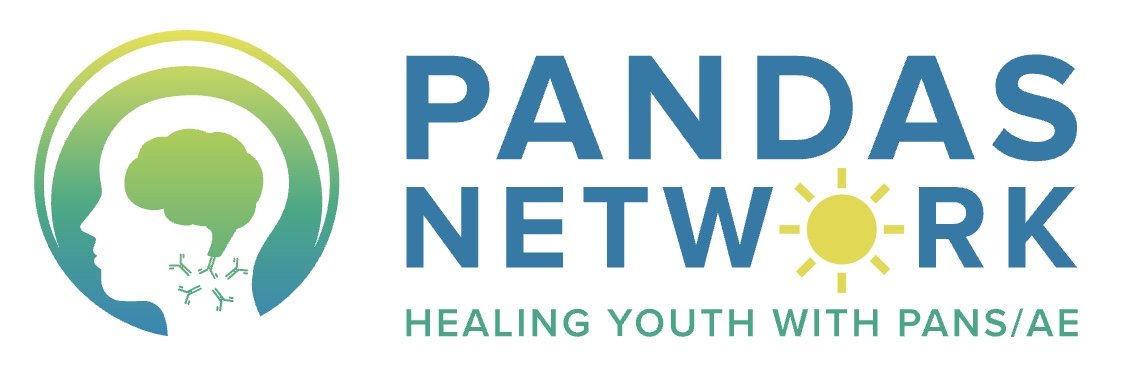What is PANDAS/PANS?
PANS and PANDAS are autoimmune conditions characterized by a sudden onset of behavioral and psychiatric symptoms, commonly amongst children aged 4-9, but onset can occur at virtually any age. Symptoms include but are not limited to:
Obsessive-Compulsive Symptoms (OCD)
Anxiety & separation anxiety
Depression
Cognitive decline (often leading to regression in school performance)
Motor decline (also contributing to regression in school performance)
Motor and vocal tics
Sensory abnormalities
Rage
Restricted eating
Enuresis (bedwetting)
Increased urinary frequency
Poor concentration and inattention
Impulsivity
Seizures
Psychosis
PANS = Pediatric Acute Neuropsychiatric Syndrome
Can be caused by virtually any infectious agent
Common examples include
Lyme
Mycoplasma Pneumonia
Mold
Candida
Flu
PANDAS = Pediatric Autoimmune Neuropsychiatric Disorder Associated with Streptococcal Infections
Only caused by the Strep A Bacteria
Disease Process & Treatment
PANS and PANDAS are triggered by a strong stimulus to the immune system, leading to the production of autoantibodies that cross the blood-brain barrier and attack the basal ganglia, a crucial brain area for cognition, emotional regulation, and motor function. This immune response leads to often dangerous amounts of neuroinflammation that can disrupt the function and neural signaling within the basal ganglia, ultimately causing the psychiatric and behavioral symptoms mentioned above.
To alleviate the immune response and resolve behavioral and psychiatric symptoms, a 14-day course of antibiotics may be undergone or an antifungal medicine may be prescribed to clear out the infectious agent. A course of steroids (such as prednisone) may follow to dampen the inflammatory response. If the patient responds well, an immunomodulatory therapy (such as IVIG, plasmapheresis, or rituximab) will likely be prescribed to fundamentally alter the immune system so that it is less prone to attacking the basal ganglia. Multiple rounds are often needed depending on treatment response and symptom severity.
After undergoing the treatment process, PANS/PANDAS patients often experience a near-full (if not completely full) remission of symptoms, and can return to school or work to the best of their ability and, most importantly, can be themselves again.
Common Misdiagnoses (and Consequences Thereof)
Due to the complexity of PANS/PANDAS combined with the lack of medical education and awareness of these disorders, misdiagnoses are remarkably common amongst PANS/PANDAS patients. Parents often see upwards of five doctors to get an accurate diagnosis, and it’s likely that many never get diagnosed correctly at all. Misdiagnoses have dangerous consequences, as the untreated neuroinflammation can lead to permanent brain damage in untreated patients. In addition, the treatment protocols for common misdiagnoses involve treatments that are ineffective, and can even exacerbate symptoms. Common misdiagnoses include:
Attention-Deficit/Hyperactivity Disorder (ADHD)
Autism Spectrum Disorder (ASD)
Obsessive-Compulsive Disorder (OCD)
Generalized Anxiety Disorder (GAD)
Depression and/or mood disorders
Functional Neurological Disorder (FND)
Disease Prevalence
While epidemiological studies on PANS/PANDAS are still in-progress, current estimates theorize that as many as 1/200 children (ages 0-18) have these disorders. According to PANDAS Network, “the statistical relevance is equal to Pediatric Cancer., Pediatric Diabetes I and II., and ALS,” (PANDAS Network, PANDAS/PANS Prevalence).
Diagnosing PANS/PANDAS
Diagnoses are typically made by PANS/PANDAS specialists or doctors in the field of integrative and functional medicine. PANS diagnostic criteria includes a sudden-onset of Obsessive-Compulsive symptoms (OCD), as well as two or more of the following:
Anxiety
Emotional lability (mood swings)
Depression
Irritability, aggression or oppositional behavior
Behavioral regression
Sudden regression in school performance
Motor tics/involuntary movements
Sensory abnormalities
Somatic symptoms (such as enuresis or sleep disturbances)
For more information, visit:

